You are here
Sayid-Allaudina Mausoleum in Khiva.
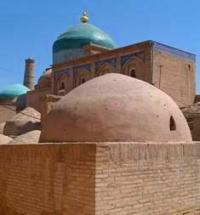
ilgrimages on the mausoleums and necropolises of Khiva.
“Our great Sheikh Alauddin,
With his death he has received the grace of Allah
The day of his departure from the happy month of shaban,
Ten days later occurred”
Tourist attractions of the cities of Uzbekistan.
The mausoleum is one of the most ancient monuments of Ichan-Kala. The mausoleum consists of ziyarathana (places of worship) and gurhana (tomb). Over the centuries, due to the increase in the number of burials and land strata the mausoleum remained below ground level.
Archaeological excavations have accumulated a lot of information on the history and appearance of the old monument. Living in the past, historian Ahmed Razi, including Sayid Alauddin into the list of the major known Khorezm sheikhs, claims that he was one of the biggest sheikhs after the sheikh Nadzhmeddin Kubra.
These words can also be read in the works of Navoi and Jami. The manuscript of the Khivans Safarzadeh son of Babajan about the holy people of Khorezm writes the following: "This man was born in the XIII century, a native of Khorezm Uzbeks.
As a youth, after finishing of the old school, studying at the madrassah he was a mullah, who taught children in the old school at the mosque. He was considered as a schoolteacher of Pahlavan Mahmud".
In gurhana (burial place) the dakhma (tomb) remarkable beauty is placed, which is considered sacred, which is lined with elegant glazed majolica tiles of green, dark blue, blue and white colours.
All colours in the patterns of majolica form some extraordinary beauty by their relief. Such majolica patterns in Khiva are the only ones. Their age mates and similar to them on the performance of patterns are the majolica patterns formed on the tomb of Sheikh Nadzhmeddin Kubra in his mausoleum in the city of Kunya-Urgench (in Turkmenistan), and on the tomb of the mausoleum of Kusam ibn Abbas in the Shahi Zinda complex in Samarkand.
Seyid Alauddin Mausoleum was built on the initiative of his disciple and mureed, known representative of the Muslim persuasion of Nakshbendi Amir Sufi Kulyal (who died in 1380 and was buried in the city of Shakhrisabz, at the command of Amir Timur in the family cemetery of the Timurid dynasty).
The structure of the mausoleum is a bit unpresentable. His angular mukarnases (volumetric stalactites) with big kosamons, the octagonal dome in the form of ancient Khiva skullcap look very simplistic.
But the mausoleum was famous because of this tomb of incomparable beauty, that due to the large difference between the very simple view of the mausoleum and variety of its decoration and elegance seems to be brought from another place.
Dakhma is piled and decorated like a monumental building. The ground is executed in the form of a stepped elevation, decorated with miniature columns in the corners, the front part of the dakhma is covered with glazed majolica tiles. Its walls are fine painted with floral ornaments in the form of fine borders within which there are patterned panels.
The facets of dakhma in the form of fine borders, panels, two miniature sagana (tombs) installed on dakhma are decorated with floral ornaments. Small floral patterns are displayed very realistic.
Their shape reminds the patterns inflicted into household items during that period . Flowers, used on majolica dakhma patterns, fine lines inside the large forms, all of them together make colourful and attractive picture.
Against the background of the diversity of ornamental openwork the inscriptions written in white paint on small surfaces of small sagana differ from others. From these verses, it became known that the sheikh died on March 18, 1303.
Mausoleums over graves of famous sheikhs over time turned into a place of worship (ziyaratgah). Khan of Khiva Alla Kuli Khan (1825 - 1842) built the magnificent structure over his tomb during his reign as a sign of commitment to him and allocated a significant amount of waqf land.
In 1825, the mausoleum was fully restored, arched wings of the destroyed portal were piled again in a little shortened form. The niches inside the building were laid, the floor in the room is laid out of Khiva square bricks and the walls are plastered by ganch.
On top of the walls 14 lines of poetry in Arabic script in Persian were written with ink. In these inscriptions it is reported that the building was restored by the order of Allah Kuli Khan under the leadership of Hamid Khoja son of Hubbikuli Khoja.
Ya. G. Gulyamov story about the mausoleum of Seyid Allaudin.
The Seyid-Allaudin Mausoleum consists of two domed rooms connected together, one of which serves as the mausoleum of Seyid-Alavaddnna, and the other as the khanaka. The low portal, which bears obvious traces of a later restructuring, leads to a large, square in plan, the khanaka, turned into a mosque in the last (pre-revolutionary) time.
Hanaka has a high dome ceiling. Below the tromp there is a ledge along all the walls - something like a smooth frieze about 60 cm wide. On the western wall, its surface is occupied by Persian verses; The most interesting places for us say the following: “For some time he lived in Kaba (in Mecca), and finally headed here. His name - Sheikh Alavaddin - is a unique pearl from the sea of science. This gumbez was built in antiquity, the domes of heaven competed with it. It was built by Emir Kulal. ”
Further, it is stated that the Gumbez was repaired during the rule of Allah Kuli Khan (1825 - 1842). Here the phrase is a date and means 1241 GX. (1825), i.e. year repair work. At this time, the collapsed portal was restored, the dome ceilings were repaired and the alabaster gravestone described below was restored.
In the middle of the eastern wall of khanako there is a wide but low pointed arch leading to a small, simple in structure, domed room with a gravestone (sagana) of Seid-Alavaddin. The gravestone has the form of a parallelepiped, made of burnt bricks and lined with glazed tiles with a low underglaze relief.
Its corners are decorated with semi-columns on which a small cornice rests, and the planes of the walls are divided into ornamental panels with rectangular smooth frames. The height of the gravestone is 1.25 m, the width is 1.20 m, and the length is 2 m. parallel to each other are two identical tiled miniature reproduction of gravestones in the form of a pointed arch of the usual modern gravestones of Muslim cemeteries of Central Asia.
The gable walls of both "gravestones" are lined with irrigated tiles with relief inscriptions of Arabic verses in complex Khatisulus handwriting, which contain the name and time of death of the sheikh. The relief of the ornamentation of the whole tombstone consists of interlacing branches, foliage and floral undertones trimmed in greenish-white tones, which surprisingly gently harmonize with the blue background color, According to the inscription on the tombstone, Seid Allaudin died in the year 702, i.e., in 1303 AD er In particular, the biographer of the second half of the XIV century, Imam Yafi and Ahmed Razi, mentions him in his enumeration of the Khorezm sheikhs.
Emir-Kulal, the famous mystic of the Naqshbandi Order and teacher of Boguddin, to whom the 19th century inscription in the khanaka attributes the construction of this gumbez, died in 1380 AD. er He possessed great wealth and enjoyed prestige among the representatives of the ruling elite of that time. It was the time of the triumph of the reactionary Sheikh orders, which found strong financial and administrative support in the person of the Mongol nobility, who enslaved and predatory exploited the population of the cities and villages of Central Asia.
To ideologically justify its rule, this nobility needed the help of the local clergy. The Mongols and their appointees from among the local nobility built many khanaks and mausoleums for the dead and revered living sheikhs, accompanying them with large donations of land, irrigation canals and settlements, the proceeds of which went to the maintenance of all sorts of dervishes and sheikhs.
For example, the most ancient Khorezm vakuf document, now stored in the library of the Khiva Museum, reports that Timur Kutluk, vicar of the Golden Horde Khan, built two large khanaks for Sheikh Suleiman Haddadi, one of which was at the foot of the Mizdahkan hill, and the other somewhere near the city Khiva. He donated two plots of land for the maintenance of these khonakos, the income from which was 55,000 pounds of wheat per year.
It is possible that the mausoleum of Seyid Allaudin was really built on the means of a wealthy sheikh Emir Kulal, but in his rather detailed biography there is no indication that he had been in Khorezm or was engaged in construction activity there.
In any case, the time of construction of the mausoleum, indicated in the Alla Kuli Khan inscription, finds direct confirmation in the style and technique of the tombstone of Seyeid Allaudin. The latter in this relationship is closely related to the tombstone of Najmeddin Kubra in Kunya-Urgench, known to us from the description of A. Yu. Yakubovsky and from his direct acquaintance with him in 1936.
Then he finds close parallels in facing with the irrigated relief tiles of the main facade of Turkan-Aka, Timur’s sister’s mausoleum in Samarkand.
There is no reason to doubt that these glazes, which are almost the best in quality and artistic finish, originate precisely in Khorezm of the Golden Horde epoch, by the time of Timur get known distribution in other areas of Central Asia and disappear from use at the beginning of the XVth century.
The tombstone of Nadjmeddin Kubra dates from the forties of the XIV century, the mausoleum of Turkan Aka - the second half of the XIV century. Apparently, the manufacture of the tombstone of Seyid Allaudin and, as will be seen later, also the construction of the mausoleum of Seyid Allaudin, apparently, should be referred to this date.
The main structural details of it, such as the trompas, domes, the shape of the arches, allow us to state that this building was built simultaneously with the tombstone itself. The layout of the building is interesting, as a multi-domed structure of the type, which is conventionally united by the “gumbesa” concept.
This type belongs to Sheikh-Mukhtar 30 gumbez (died 1288 AD) in the village of Astana, Yangi-Aryk district, Khorezm region, the building of which is also attributed to Emir Kulyalu.It consists of a mosque, khonako and a mausoleum and differs from gumbez Seyid Alavaddin only by its larger scale.T
he same layout and architectural composition is given by the famous gumbez Sheikh-Sayfad-din-Boharazi (mosque, khanaka, mausoleum) bli The city of Bukhara, built on the orders of the Mongolian queen-wife of Tuli-Khan.
The following monuments of Khorezm ascend to it: the Sheikh Abbas mausoleum (mosque, mazar and khanaka) in the city of Shabaz and the mausoleum of Narinjan Baba (mosque, mausoleum and khanaka) Turtkul district, Karakalpakstan, the construction of which belongs to the XIV century AD These observations suggest that religious buildings of this complex type are becoming widespread only in the XIV century.
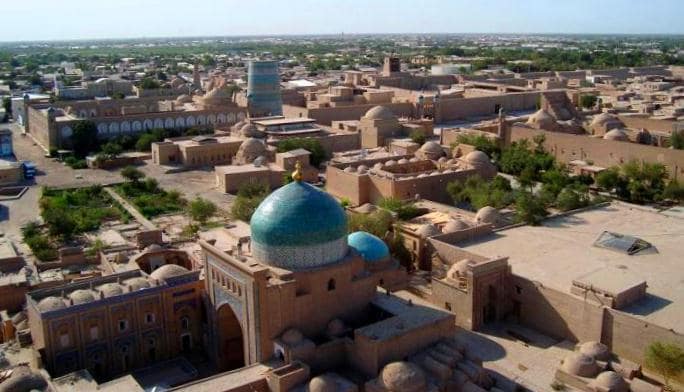
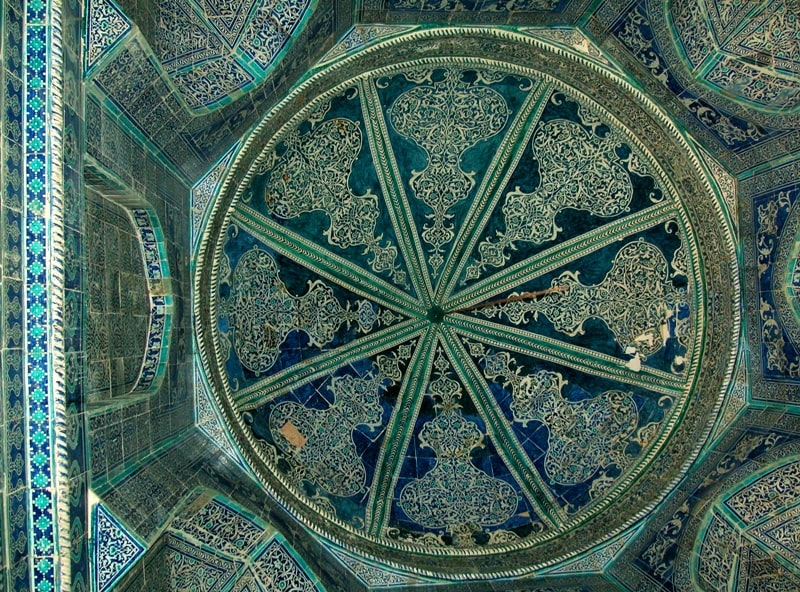
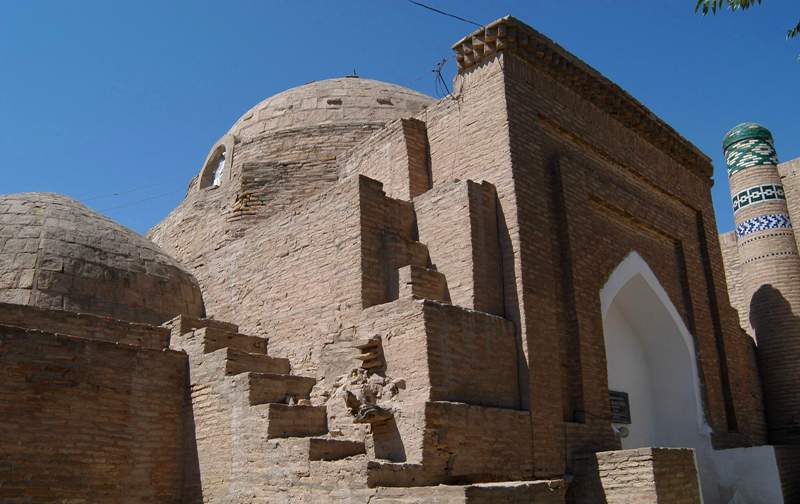
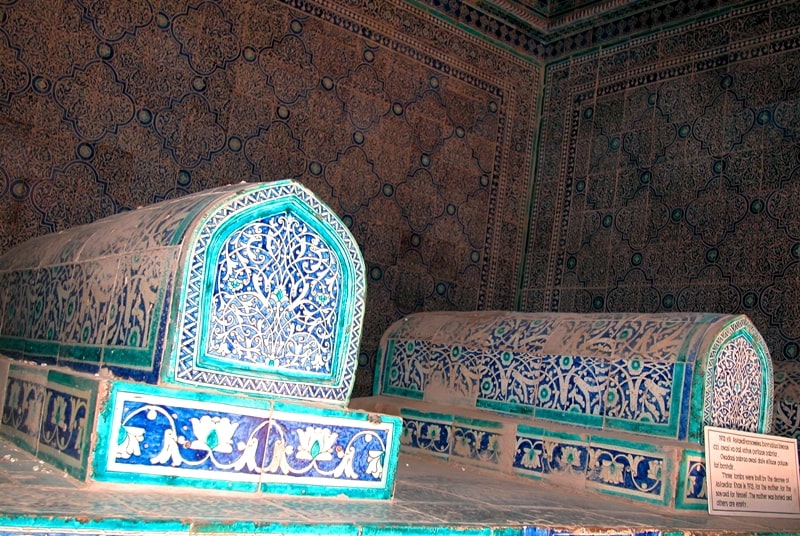
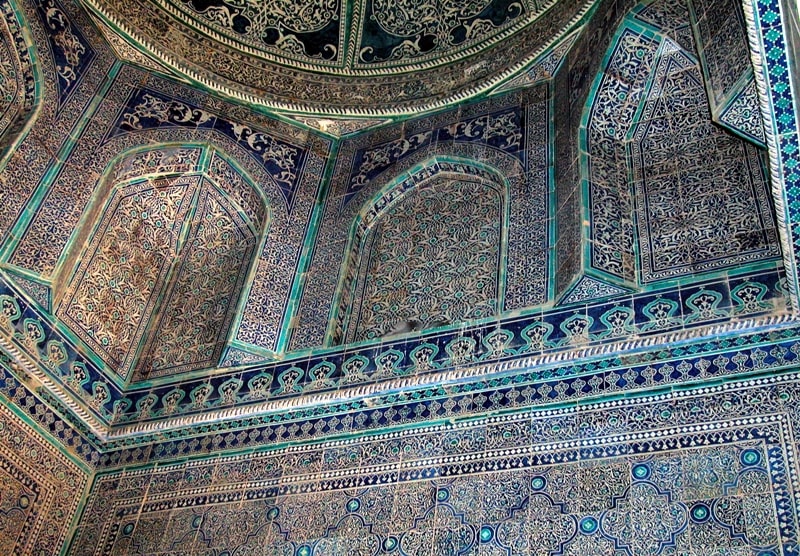
Enlightener:
http://welcomeuzbekistan.uz Ya. G. Gulyamov. "Monuments of the city of Khiva". Publishing house UzFAN. Tashkent. 1941
Photos
Alexander Petrov.







